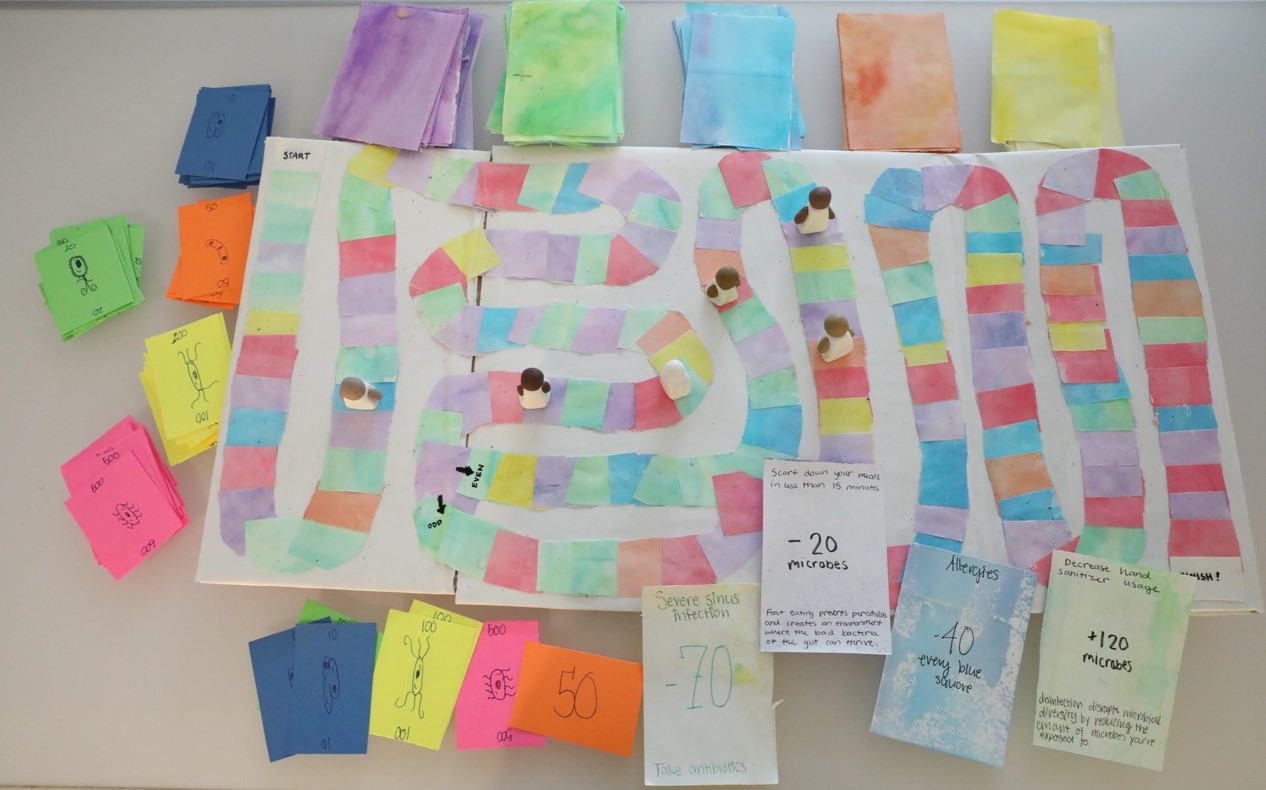Dhruvi Joshi
Bellevue HS, WA
Senior (2019-2020)
 Career Goals:
Career Goals:
The STEM field is such a vast and interconnected field and I aspire to be a part of this beautiful web. The biological and life sciences especially resonate with me because of their powerful impact on the lives of others. It amazes me that a discovery made in the USA has the power to change lives all the way around the world and vice versa. I hope to become a research scientist one day and be able to start the process of a question transforming into an experiment that gets us one step closer to the answer. Although I’m not sure where my focus will be, whether it be cancer research, microbiology, or genetics, I know that I want to contribute to this ever-changing field. Biology is an integral part of our lives, it dictates so much of our quality and quantity of life and there is so much left to be uncovered. The possibilities, especially in new fields such as microbiome research, are endless and that excites me so much.
What did you learn from this course?
STEAM has taught me a lot, but for me learning about the microbiome and the field of microbiology has been the most interesting. I had never really considered the field of microbiology before, but through talking to experts in the field it really opened my eyes to this new world. Before STEAM I didn’t have much of an idea about what the microbiome was and how the choices I make can have drastic effects on them. Now I’m more aware of how everyday actions, like using hand sanitizer, have an effect on this ecosystem inside my gut. From STEAM I have gotten a clearer idea of what a scientist's day to day life looks like and have been exposed to many different types of career pathways. Listening to the speakers and learning about their work has been really inspiring and has made me excited about my future in the biological field.
What advice do you have for future Ambassadors?
Don’t be afraid to ask questions no matter how small they might seem. Questions are the key to being able to dive deeper into the topics that catch your interest. They also steer the conversation in new and interesting directions that open your mind to new possibilities and thoughts. For example, through questions, we were able to learn how evolutionary genetics, CRISPR, and personal well-being, areas all connected with the tread of data analytics and computational biology.
– Showcase Project –
"Microbia! The Microbiome Board Game"
Project Team Member: Kristen Santarin
Who/What inspired this project?
We were inspired to focus on the subject of the microbiome after listening to ISB’s own Dr. Sean Gibbons’s lecture about how the microbiome impacts human health. It was really incredible for us to learn how this is still a relatively new field of research in biology. Scientists are just beginning to understand how profound a role the human microbiome has on our health. Because of this, the information of human microbiota was entirely new to both of us as it was never taught in either of our AP or IB Biology classes in high school. It was also mind-blowing that even though it’s such an important part of our health it’s never covered by the school curriculum or our doctors. With our project, we hope to bring the microbiome into the spotlight and educate more of the general public about these amazing little organisms.




How does your project communicate the relationship between the environment and health?
Multiple examples of the relationship between the environment and health are made throughout the entirety of the board game. The vast majority of the squares players can land on are green “Good Choice” squares and purple “Bad Choice” squares. The “Good Choice” and “Bad Choice” squares direct the player to draw a card that will list either a positive or negative choice. Because they impact the microbiome, the choices make players gain or lose microbes, thus changing the diversity of their microbiome. The “choices” listed on cards are very mundane and common, such as what foods we eat and where we go during the day, and though they are seemingly minuscule choices they can accumulate to form major changes on the wellness of our microbiomes and overall health. Each choice and its impacts on our health were weighted so that players can form a clear understanding of how impactful certain daily decisions are on our health. The bottom of each card also explains how each choice directly influences the health of the microbiome. There are also “sick day”, ”wild card”, and “disease day” squares that show that sometimes there are factors out of your control such as getting sick and having to take antibiotics (which hurt your microbiome) but it’s not the end of the world If that’s the case. These squares show that sometimes antibiotics are needed to cure a certain sickness or manage a disease, but you can still have a healthy microbiome and bounce back by making good lifestyle choices.
Who is your target audience?
The target audience of this project is families with members of all ages. We recommend this board game for ages 8 and up so as to ensure that the message can be fully comprehended by players but can still be received at a young and impressionable age. We chose to target this particular audience because we want to improve the general public's knowledge of the human microbiome. By placing the subject in a fun, easily digestible, and accessible family-friendly board game, we are able to raise awareness of the importance of our habits and the impacts of lifestyle and the environment on our health. We believe that people are never too young or too old to gain control over their own wellbeing and this board game serves as a reminder to take care of our microbiota. We also hope that by introducing ideas for small lifestyle changes, such as buying whole-grain bread over white bread, it inspires people to start making small changes in their own lives and instilling these small, healthy habits in their kids.
As an Ambassador, how do you plan to share your message with your target audience?
We plan to share this game with our high school biology classes because that is a relevant and readily available place to share our knowledge and educate our peers about how the choices they make affect these tiny but vital creatures in our gut. The game connects to the class as an extension of base knowledge the class provides, however it is, unfortunately, a topic that isn’t currently covered in the curriculum. We also plan to share the game with middle school science classes and elementary students above the age of 8 to begin educating them about this important ecosystem in their bodies so that they develop healthy habits at an early age and can go home and further educate their family and friends. Another idea is to place this game in the waiting lobby of doctors offices, especially family doctors and pediatricians because that would be a place where our target audience is readily available. The board game is an inspiration to hopefully start a conversation with the doctor about gut health and how to develop and maintain healthy habits and make the right choices. The general public doesn’t know much about the microbiome even though it’s so important to our health. We certainly didn’t know how vital it was until we took the STEAM course so hopefully our project serves to start a conversation and inspire people to make better lifestyle choices for their gut and overall health.
